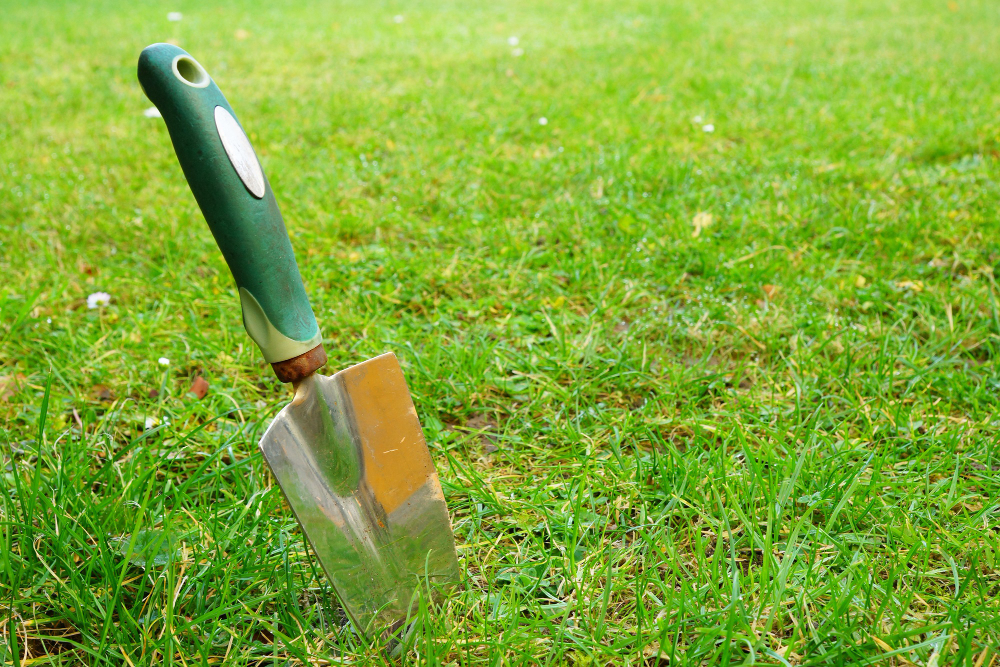The Ultimate Guide to Caring for New Sod: The Green Path to a Beautiful Lawn

Laying down new sod can be an exciting phase in transforming a patchy, barren yard into a lusciously green lawn that's an epitome of health and vibrancy. However, the work doesn't stop the moment the sod is rolled out. In fact, this is just the beginning of a conscientious lawn care regimen that can ensure your investment thrives. To provide you with a robust blueprint for your new sod care, we'll take you through the essentials, including how to manage the initial root establishment, maintain a healthy growing environment, and cope with the inevitable challenges that arise. Your newly sodded lawn is not just a 'grass start,' it's your canvas of green potential.
The First 2 Weeks: Root Development
Keep It Hydrated
The most important element during the first two weeks is water. The sod requires constant moisture to support root development. You want to aim for the soil underneath the sod to be consistently moist without creating puddles, especially with warm temperatures in Orlando, Florida.
Watch the Clock
Sod should be watered immediately upon installation, and approximately twice a day, once in the early morning before the sun rises and once in the early afternoon when the day is hottest, for about 15 minutes each time. Ensure that the new sod never dries out during this crucial establishment period.
Avoid Heavy Traffic
While your sod is taking root, try to minimize foot traffic on the lawn. Heavy use can disrupt the roots' ability to establish in the soil, so keep kids and pets away as much as possible.
Weeks 3-6: Transitioning to a Routine
Tapering Watering
After about two weeks, you can start tapering your watering schedule to once a day in the early morning. Pay close attention to the moisture level of the soil to prevent under or overwatering.
Fertilize Sparingly
A light application of low-nitrogen fertilizer can encourage root growth without prompting excessive top growth. However, use fertilizers sparingly to avoid creating a surge that can stress the new root system.
Gradual Mowing
Around week three, if the new sod has grown to at least 3 inches in height—which in Orlando's climate is quite possible—consider mowing for the first time. Set your mower to the highest recommended setting to ensure you're not cutting the grass too short, which can hinder further root growth.
Weeks 7 & Beyond: Growth Stage
Regular Maintenance
By now, your sod should be fully integrated into the ground. Regular maintenance is key. Develop a mowing schedule and stick to it, typically every 5-7 days with a third of the grass blade removed at each mowing.
Weeding
Monitor for weeds and remove them promptly. Given the tender age of your sod, you don't want to use harsh chemicals; instead, opt for manual removal.
Pests and Disease Surveillance
Keep an eye out for any signs of pests or disease. Early detection will be your best ally against potential issues that can quickly spread through a young lawn.
Troubleshooting
Dealing with Hot Spots
If you notice certain areas of your newly sodded lawn turning brown, it could be a sign of over or under watering. Adjust your irrigation schedule accordingly and closely monitor affected areas.
Addressing Poor Rooting
Sparse rooting can occur for several reasons, including inadequate watering, poor soil preparation, or pest activity. Ensure your watering practices are appropriate, and consult with a professional if you suspect other underlying issues.
Preventing Soil Compaction
Compacted soil will suffocate your grass's roots. To prevent this, try to reduce heavy traffic on your new lawn. You can also aerate your lawn to relieve soil compaction.
Aesthetic Improvement
Thinning Areas and Patching
If certain areas of your sodded lawn are sparser than others, you can address them by purchasing extra sod or using a quality patching formula. Cut patches to fit, and gently press them into place.
Border Control
Use natural barriers to prevent thin borders along fences and walkways. Rocks or decorative edgings can define these areas and protect the young sod from damage.
Regular Review
Take time weekly to review the state of your lawn. Are there areas of low density? Is the color consistent? These visual checks can help you spot issues before they become significant problems.
Final Tips
Creating a Watering Routine
Establish a watering routine that is consistent and adapted to the weather conditions. It's better to water deeply and less frequently to encourage strong root growth.
Soil Health
The health of your soil directly impacts the health of your grass. Consider periodic soil testing and treatments for pH balance, nutrient deficiency, and compaction.
Professional Help
If you're uncertain about any aspect of your new sod care, don't hesitate to consult with professionals. A sod contractor or gardening expert can provide tailored advice for your specific lawn and location.
By following this detailed guide to caring for new sod, your lawn in Orlando, FL will have every opportunity to flourish into a verdant, luxurious landscape. Remember, patience and consistency are your allies in this green endeavor, and the rewards of a beautiful lawn are well worth the careful attention it craves. From the Ground Up Landscaping can be your partner in achieving that dream lawn, providing not just the sod you need, but the expertise to ensure its success. If you're looking for sod contractors in Orlando, FL, contact us today for a consultation to start the next perfect day in your outdoor space.